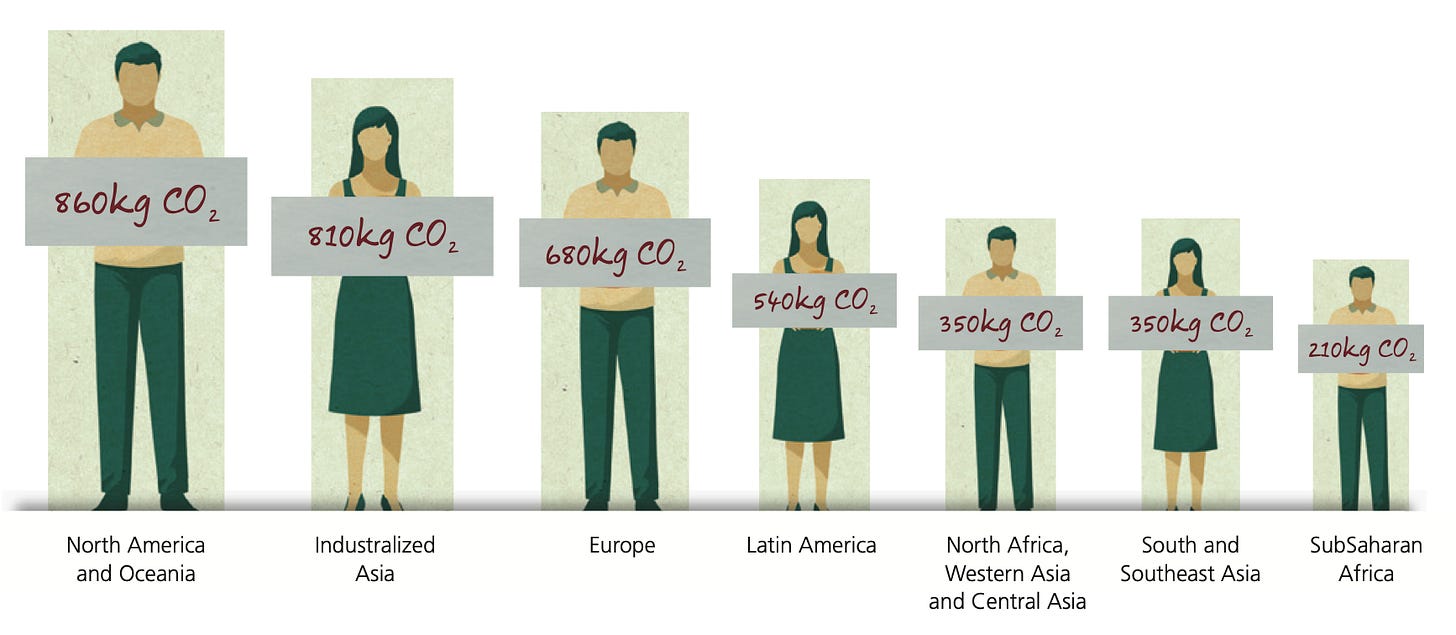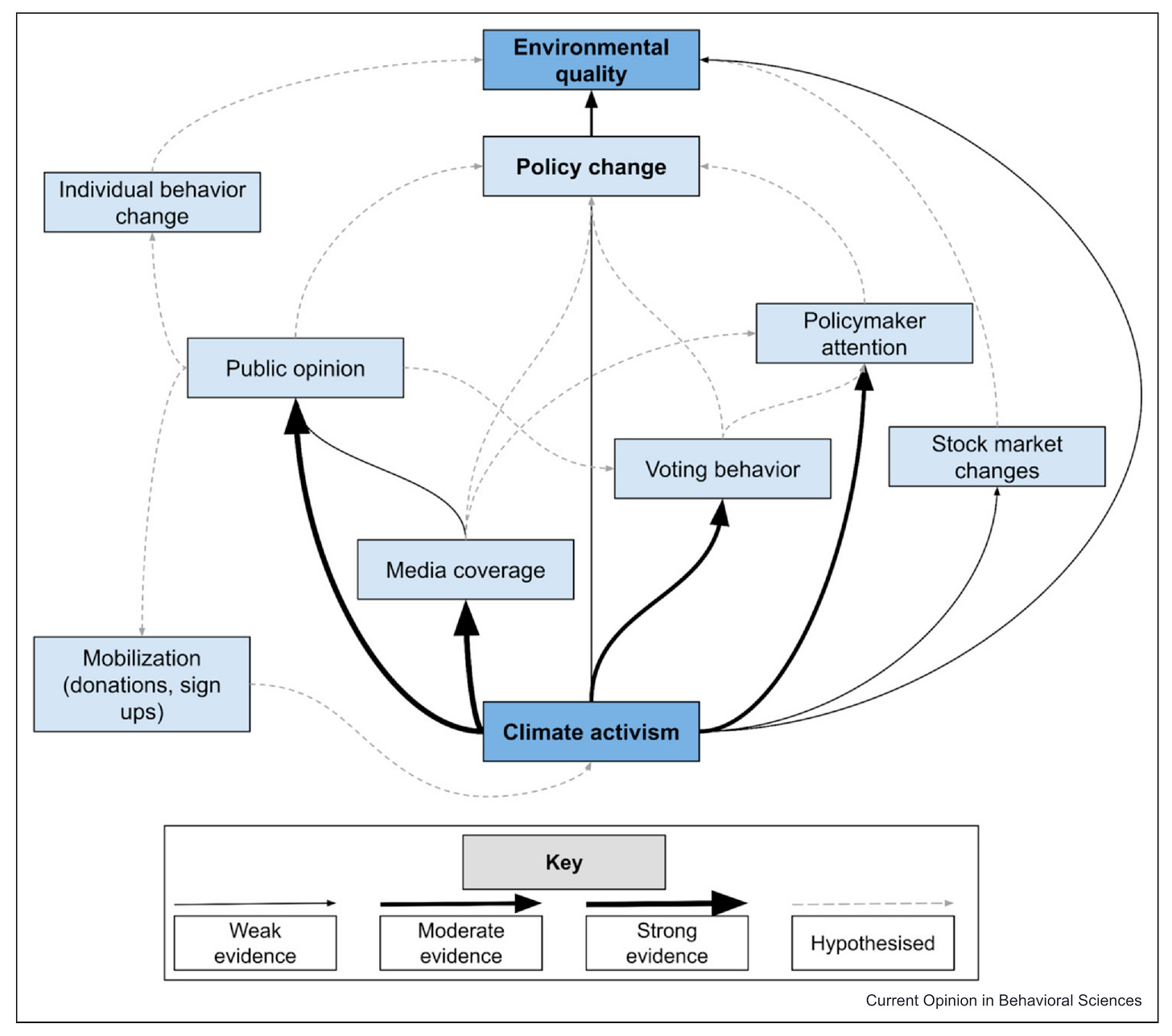Welcome to Nexus Notes. These are quick thoughts from me designed to share things I’ve been up to, been reading or just any other random stuff I’ve come across I think you may enjoy for the week.
In this post: reduced food waste as a climate solution, whether climate activism works, large-scale coral restoration feasibility, and tree-planting initiatives around the world.
Hi folks!
Hope you’ve had a good Easter break. The weather here in NZ has been atrocious but is coming right now. It’s been a busy and fun time in the Tonkin household with two kids birthdays in a couple of weeks plus easter. Hope you’re all doing well out there. Enjoy some tidbits from the week.
Climate solution I’ve been thinking about
Reduced food wastage

About a third of the world’s food is never eaten. Where it is wasted along the supply chain depends on where you are in the world. In developing nations, it tends to be on farms and during storage. In higher-income regions, food tends to be rejected by retailers and consumers because of imperfections (😡).
Wasted food means wasted energy and resources that went into its production, including water, energy, fertiliser, land and seeds. It also means wasting the energy that went into transport, processing and packaging when it makes it that far along the supply chain
Reducing food waste, then, means reduced need for all of these resources, particularly land, energy and water, but also all of the resources used along the supply chain.
Given the multi-source nature of these wastages, the solutions are diverse, from improving storage and transport systems to, in high-income regions, focusing on systems overhaul in the retail and consumption side of things. The latter may be through public awareness campaigns to change behaviour and attitudes towards food.
Project Drawdown provides a nice overview of this issue here, suggesting up to 102 gigaton of carbon dioxide equivalent could be reduced over the next 30 years.
Paper I’m reading
Thomas-Walters, L., E. G. Scheuch, A. Ong, and M. H. Goldberg. 2025. The impacts of climate activism. Current Opinion in Behavioral Sciences 63:101498. DOI: 10.1016/j.cobeha.2025.101498

This paper reviewed “50 of the most recent and rigorous studies evaluating the impacts of climate activism”. They found that climate change activism has clear impacts on public opinion and media coverage, and likely impacts voting and politician communication. Although weaker evidence, the paper also suggests there is direct impact on policy and emissions. Currently, research is biased towards USA and Western Europe, so generalisability of the findings is difficult, but highlights the need for more research.
The Conversation piece of the week
Reality check: coral restoration won’t save the world’s reef.
Coral reefs are under attack around the world from a suite of stressors, particularly global warming and marine heatwaves, but also overfishing and pollution. We’ve already lost about half of the global coverage of coral reefs over the past 40 years!
Restoration is certainly an option at helping to return reefs, but the scale of local restoration cannot match the extent of the problem. Even just between 2009 and 2018, 12,000 square km was either lost or degraded. The cost of such restoration is unfortunately untenable.
“Restoring the reefs we’ve already lost around the world could cost up to A$26 trillion.”
As the piece, and associated paper emphasise, coral restoration can be useful at small scales, which can certainly be beneficial to address local needs, including engaging local communities. But it is not feasible to scale up to address global needs. There is no substitute for addressing the root cause of climate change.
Feel-good news of the week
This is a lovely piece about people around the world taking action and planting trees whose shade they may never sit under. These are true leaders. As you know, I’m a big fan of people who take action for future generations.
Photo location?
Okavango Delta, where wildlife comes to meet on a seasonal basis. In the heart of the Kalahari Desert, seasonal pulses of water bring wildlife from very long distance to congregate and capitalise on seasonal rhythms. Seasonal cycles that support wildlife around the world are at risk. As mentioned last week, we have an exciting paper coming out in the next couple of months that discusses the implications of changing seasonal cycles across the web of life. Stay tuned.
Wishing you all a fun and productive week!
Jono
And if you enjoyed this, I’d super appreciate it if you’d share it as I’d love to encourage more folks to join and achieve a group of 100 founding members!






a few years back i argued with the Queensland scientists about a dam they wished to build called the Hells gate dam, $7 billion and then they wished to build a pumping system to pipe the water over the great divide ,(our coastal mountain range running the length of the east coast of Australia) to the semi arid central north of the state. My argument was that the land there is so flat that a levee less than a meter high could capture and slow the water they receive from irregular heavy rain events for a fraction of the cost and help control much higher volumes of water than the dam ever could provide. A few years on and they have been trialing this to great success, one farmer even said his levee less than a foot high created in a few days with an old tractor is rehabilitating thousands of acres, They are now expanding the projects with the aim of covering catchment areas in the hundreds of thousand. I look at Africa and see the Sahal flat lands, Kenya , Somalia and to a degree these areas in Namibia and the notion that if we can slow movement of water across such hydrophobic soils long enough for a deeper penetration we could be achieving much better results in regards to climatic stability. Once water reaches a height above the frictional ground cover there is nothing stopping gravity and inertia from taking it quickly to the ocean along with any good topsoil and nutrient accumulation. In richer countries a sediment mesh along the lower section of fence lines could offer similar benefits and once vegetation starts to take over the dynamics of the system switch to become more self supporting. and help sustain and increase the monsoonal precipitation along with the expansion of the biotic pump. The loss of wooded areas across Africa especially the east coast are leading to more erratic rainfall patterns and the coastal build up of rainfall may decrease the biotic pump which I believe is what happened in the recent drought in the Amazon where the rotation of the earth lead to cloud mass over the water to cool before the pump could kick in . Just a theory but it could prove relevant. One only has to look at the heat dome over the horn of Africa holding rainfall over the ocean to see what this may entail. Thanks for opening some of your research for free as I believe the more people understand the more they can take ownership of these problems and the more possible solutions can come forward. Thanks again